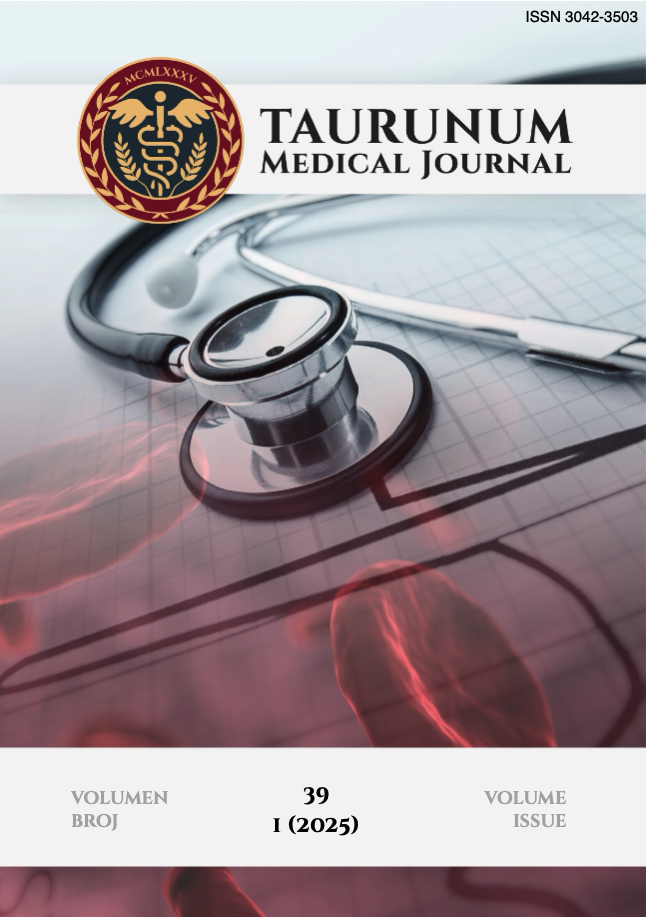
More articles from Volume 28, Issue 4, 2012
Delivery after assisted reproduction
Impact of medical therapy for sympthomatic benign prostatic hyperplasia on transurethral resection of the prostate
Dementia: Screening and early detection in General Practice -a Pilot Study
Deset godina posle -Izazovi u identifikaciji eshumiranih posmrtnih ostataka na teritoriji Kosova i Metohije
A retrospective analysis of transurethral vapor resection of the prostate versus transvesical prostatectomy for prostate greater than 50 ml
Article views
Impact of medical therapy for sympthomatic benign prostatic hyperplasia on transurethral resection of the prostate
Published: 01.12.2011.
Biochemistry
Volume 28, Issue 4 (2012)
pp. 733-740;
Abstract
The aim of this study is to examine how the introduction of medical therapy for symptomatic benign prostatic hyperplasia (BPH) might have changed the indications, patient characteristics and outcome in men undergoing transurethral resection of the prostate (TURP) over two decades (1991.- 2011.). All patients who underwent TURP for symptomatic BPH at our institutions in 1991. (before the introduction of medical therapy for BPH), 2001. (when medical therapy was becoming an important therapy for BPH) and 2011. (when medical therapy was the first line therapy for BPH), were reviewed. We assessed the total number of TURPs, indications for surgery, patient age, health status, weight of resected tissue, and pre and post-operative events/ complications. Our institutions provided primary urological care for 989, 1815 and 2162 men > 50 years of age in 1991., 2001. and 2011., respectively. There was a 60% decrease of TURPs from 1991. to 2011. with a slight increase in number in 2001. Failure of medical therapy was not an indication in 37% and 88% of patients in 2001. and 2011., respectively. There was a substantial rise in the percentage of men at risk presenting with acute or chronic retention (AUR and CUR) at the time of their TURPs ( from 23% in 1991. to 55% in 2001. and from 14% in 1991. to 38% in 2011. for AUR and CUR, respectively) (P<0.05). There was also rise in the percentage of patients presenting with preoperative hydronephrosis (2% in 1991., 13% in 2001. and 6% in 2011.) (P<0.05) and gradual decrease of UTI before TURP overtime (14%, 10% and 12%, respectively).The mean operative time was lower in 2011., compared with either of the two previous cohorts (P<0.05), postoperative stays decreased (from 4.1 days in 1991. to 2.7 days in 2001. and 2.1 days in 2011.)(P<0.05), but the number of patients discharged with catheter increase over two decades (from 3.5% in 1991 to 4.8% in 2001., and to 8.8% in 2011.)(P<0.05). The postoperative complications of our three cohorts differed significantly (14% in 1991., 6.4% in 2001. and 20.6% in 2011.)(P<0.05). The increasing use of medical therapy as a first line treatment for BPH has resulted in a dramatic decrease in TURPs which, in turn, has been associated with an apparent increase in risk of poor pre- and postoperative outcomes seems to be related to earlier catheter removal and hospital discharge, although a causal relationship cannot be established. The present study covering the last two decades would suggest that we are not delaying surgery for patients who will eventually require it. We are now selecting the appropriate patients for TURP, rather than using TURP as our only means of BPH therapy as we did two decades ago.
Keywords
References
Citation
Copyright
This is an open access article distributed under the Creative Commons Attribution License which permits unrestricted use, distribution, and reproduction in any medium, provided the original work is properly cited.
Article metrics
The statements, opinions and data contained in the journal are solely those of the individual authors and contributors and not of the publisher and the editor(s). We stay neutral with regard to jurisdictional claims in published maps and institutional affiliations.




